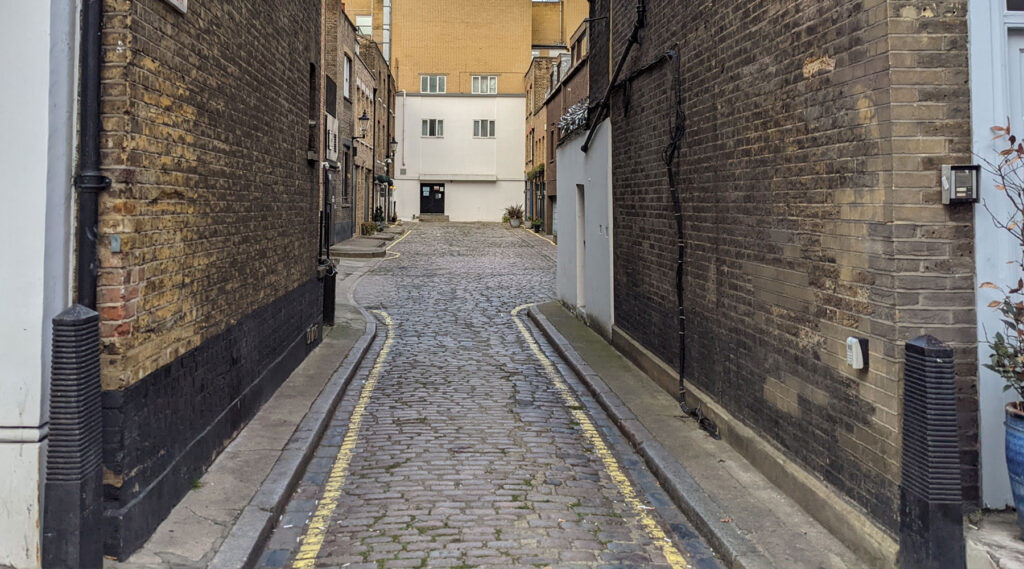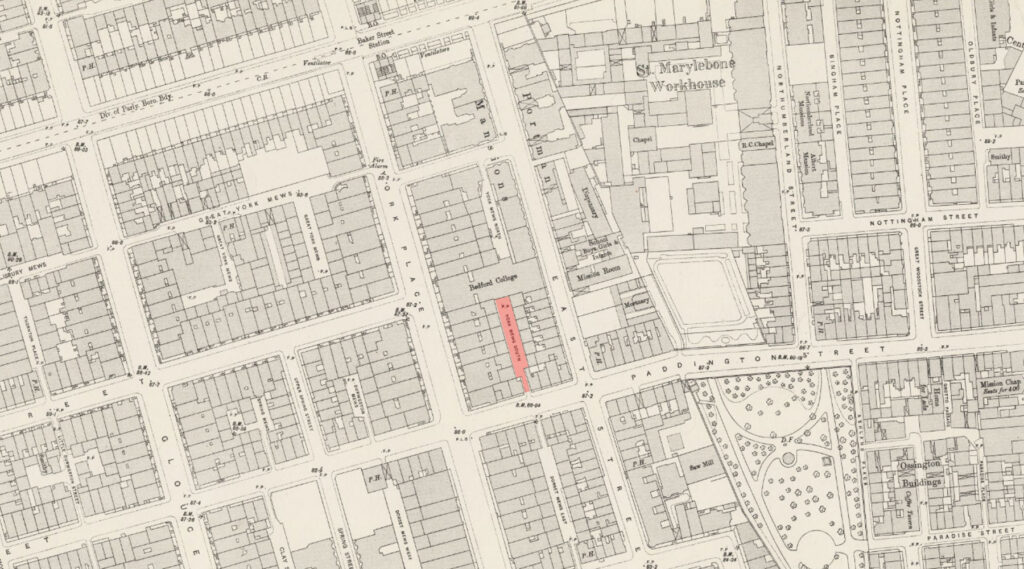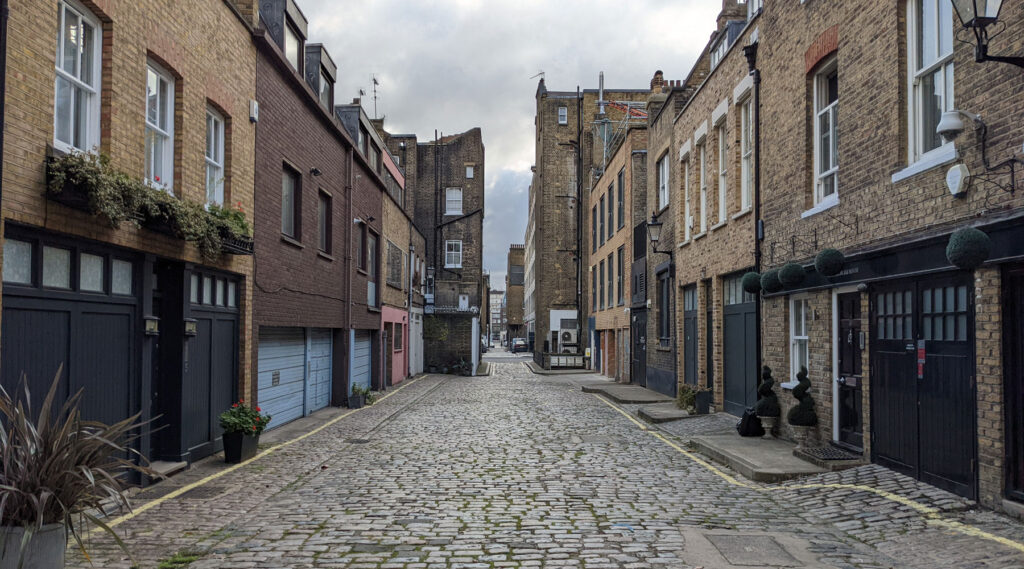Just off Baker Street, home of a famous detective can be found a small cobbled street, Sherlock Mews, but which came first, the man or the mews?
The mews can be found running through the middle of a block of houses built as part of the wider development of the area in around 1800 as part of the Portman Estate. As with many blocks of houses in the area, the fronts face the main roads, with back access for stables and staff running in the middle of the block via the mews. As with most old stables mews, the former stables are now private homes.
Although the Portman Estate still owns a vast swathe of land to the south of the mews, much of the northern part of the estate was sold in 1951-2 when the estate, valued at £10 million was hit by death duties of £7.6 million following the death of the 7th Viscount Portman, requiring a lot of the estate in London, and their rural estates to be sold to pay the tax bill. This was at a time when death duties (now inheritance tax) could reach 80 per cent of the dead person’s wealth. Today it’s 40 per cent, with a lot of exemptions, so the real rate is often negligible.
The mews used to have the more serious name of York Mews South, because, at the time, the length of Baker Street north of the junction with Paddington Street / Crawford Street was called York Place. When York Place was renamed Baker Street at the turn of the 20th century, the mews was renamed Sherlock Mews, which seemed an obvious name to choose for the locally famous fictional detective.
Technically, the detective’s address, 221B Baker Street would have been more correctly, 221B Upper Baker Street. More amusingly, the Sherlock Holmes Museum is at 239 Baker Street, but by agreement with Westminster Council is allowed to show the fictional street number on its building.
But back to the mews.
It presents a narrow cobbled entrance that quickly opens up with a wider courtyard space within.
By the entrance to the mews, on the left is a 1970s building that’s the back of the shops and offices fronting Baker Street, and is also the rear entrance to the Everyman cinema in the basement. The cinema was built in the 1930s as the Classic Cinema in an art-deco style, but when the upper floors were rebuilt in the 1970s to relegate the cinema to the basement, they put a replica of the original facade back on Baker Street, so you can hardly notice the cinema anymore.
At the moment, the mews side of the building is being rebuilt and made taller to create a single 5 bedroom house and a number of flats.
The mews is a mix of characters, with some older Georgian stables conversions and a few obviously more modern replacements. One that may fool people is 11 Sherlock Mews, which was a modern frontage, but that was replaced in 2013 with the current more suitably older looking front.
Further down the mews is Sir Peter Blake House, which was rebuilt in 1987 as offices by lawyers, and that seems to be when it was named Sir Peter Blake House, but whether he lived here in the past has proven rather difficult to source. The offices were converted into a home in 2007.
At the far end of the mews is a modern back entrance to offices, that used to be Bedford College, an educational institute for women set up in 1849 in Bedford Square, but moved to this location in 1889 and built a new building running the full width of the block. The college moved out in 1915, and merged into the Royal Holloway College in 1985. The building there today is modern, having replaced the old college rooms in the 1980s.
Otherwise, this is a fairly conventional mews, quiet secluded with just a slight air of refinement about it, but notable mainly for the name it gained in the 1900s.









